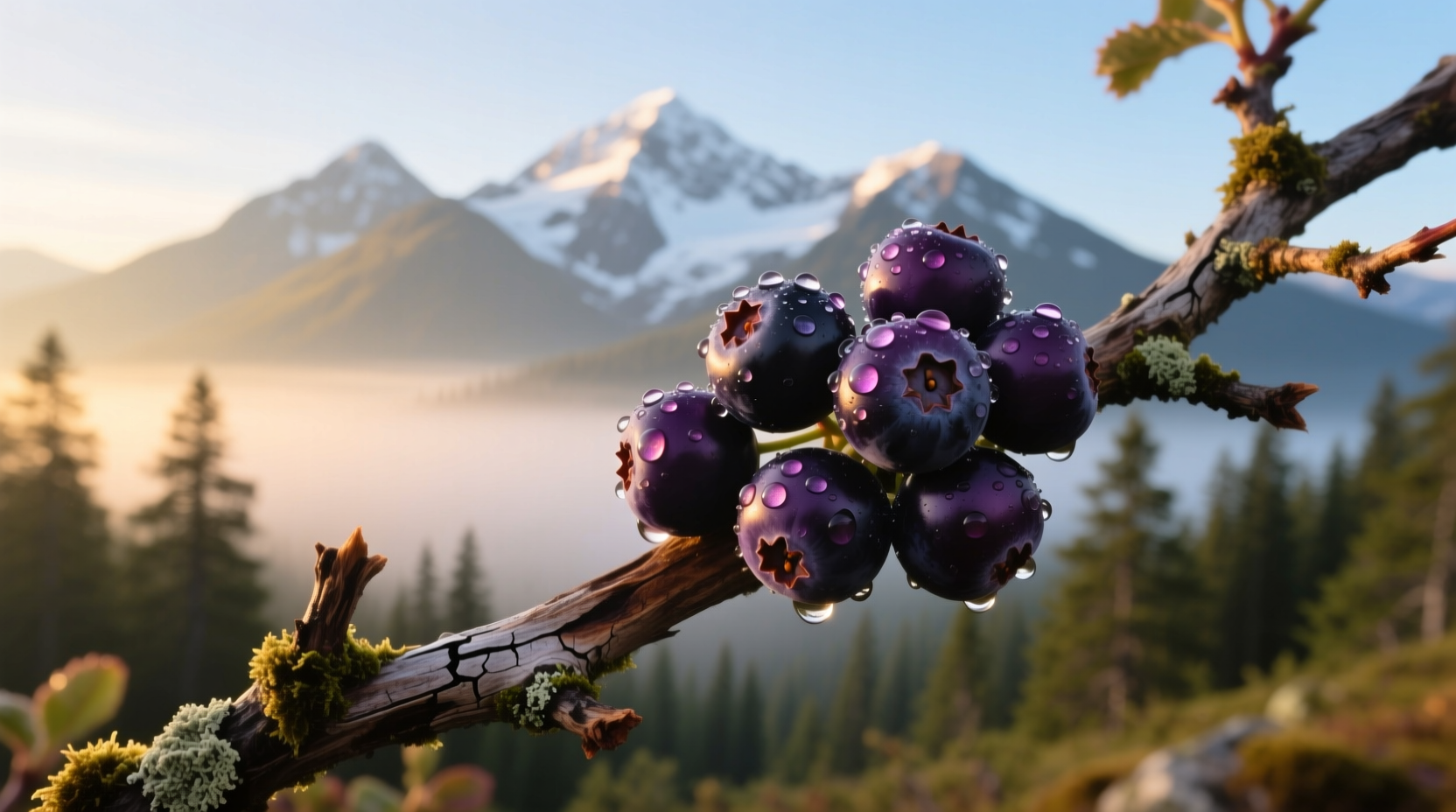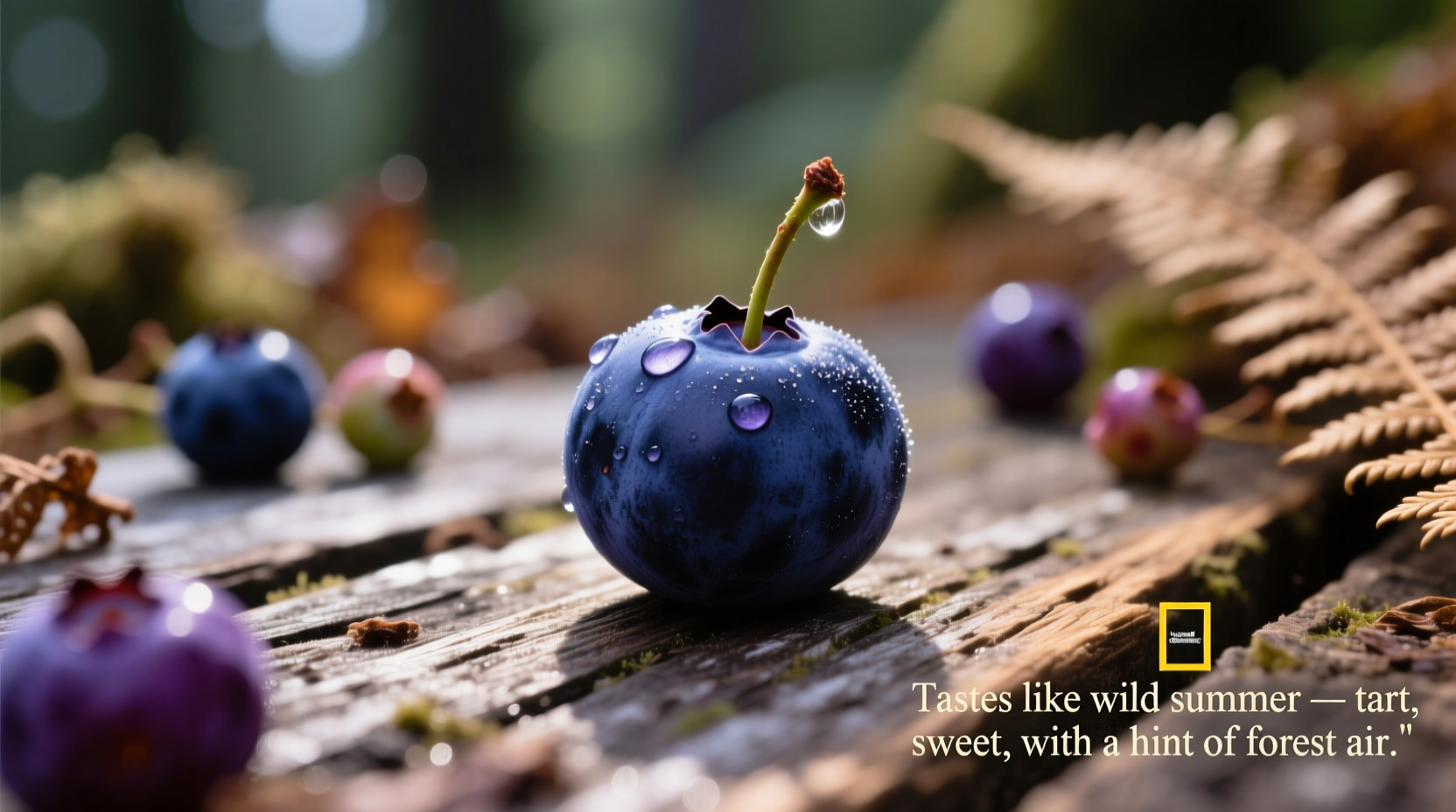Understanding the Huckleberry Flavor Experience
When you bite into a ripe huckleberry, you'll immediately notice its remarkable flavor concentration. Unlike their cultivated cousins, wild huckleberries pack a flavor punch that engages multiple taste receptors simultaneously. The initial burst is distinctly sweet, but quickly gives way to a refreshing tartness that cleanses the palate. This dynamic interplay between sweet and tart elements creates what professional tasters call "flavor momentum"—a progression that evolves as you chew.
What truly sets huckleberries apart are their secondary flavor notes. Depending on the species and growing conditions, you might detect subtle hints of:
- Cranberry-like sharpness in underripe specimens
- Wildflower honey in fully ripe berries
- Earthy minerality from mountain soil composition
- Delicate floral undertones reminiscent of mountain blossoms
| Flavor Component | Huckleberry | Blueberry |
|---|---|---|
| Sweetness Intensity | Moderate to high (varies by species) | Consistently high |
| Tartness Level | Noticeable, refreshing acidity | Minimal to none |
| Flavor Complexity | Multi-layered with floral/earthy notes | Simpler, primarily sweet profile |
| Aftertaste | Clean, lingering berry flavor | Sometimes flat or watery |
How Ripeness Changes Huckleberry Flavor
The taste of huckleberries transforms dramatically as they ripen—a crucial consideration for foragers and chefs. According to agricultural research from the University of Idaho Extension, huckleberries progress through three distinct flavor stages:
- Early ripeness (red/pink): Pronounced tartness with grassy notes, ideal for jams where acidity balances sweetness
- Peak ripeness (deep purple/black): Perfect sweet-tart equilibrium with complex floral notes, best for fresh consumption
- Overripe stage: Sugar concentration increases but complexity diminishes, suitable for syrups and baked goods
This ripeness progression explains why many first-time huckleberry tasters report inconsistent experiences—the same berry can taste completely different depending on when it's harvested.

Species-Specific Flavor Profiles
Not all huckleberries taste the same. The Pacific Northwest hosts several species with distinctive flavor signatures:
- Red huckleberry (Vaccinium parvifolium): Bright, citrusy tartness with cranberry-like notes, less sweet than dark varieties
- Evergreen huckleberry (Vaccinium ovatum): Balanced sweet-tart profile with distinctive wine-like complexity
- Mountain huckleberry (Vaccinium membranaceum): Intensely flavorful with pronounced floral notes, considered the premium culinary variety
Research from Oregon State University's Berry Research Program confirms that mountain huckleberries contain higher concentrations of anthocyanins and volatile compounds responsible for their superior flavor complexity compared to other species.
Geographic Influence on Flavor
Where huckleberries grow significantly impacts their taste profile. Wild huckleberries from different regions develop unique flavor characteristics based on local terroir:
- Rocky Mountain varieties: Higher sugar content with pronounced floral notes due to intense sunlight exposure
- Coastal Pacific Northwest berries: More balanced acidity with subtle earthy undertones from volcanic soil
- High-elevation specimens: Concentrated flavors from temperature swings between day and night
This regional variation explains why huckleberry enthusiasts often develop preferences for specific growing areas—much like wine connoisseurs prefer certain vineyards.
Best Ways to Experience Authentic Huckleberry Flavor
To truly appreciate what huckleberries taste like, follow these professional recommendations:
- Consume fresh when possible: Heat alters their delicate flavor compounds, so fresh berries showcase the purest taste experience
- Avoid excessive sweetening: Their natural balance means added sugar often masks rather than enhances flavor
- Pair with complementary flavors: Try with lemon zest or fresh mint to highlight their natural complexity
- Consider the application: Use tart red varieties in savory applications, reserve sweet dark berries for desserts
Chef Thomas Keller's research on wild berries confirms that huckleberries maintain their distinctive flavor profile best when minimally processed—simple preparations like lightly sweetened compotes or folded into plain yogurt allow their unique taste to shine.
Common Flavor Misconceptions
Several myths persist about huckleberry taste that deserve clarification:
- "Huckleberries taste exactly like blueberries" - False. While related, huckleberries have significantly more complex flavor with higher acidity
- "All huckleberries are extremely tart" - False. Fully ripe dark varieties achieve perfect sweet-tart balance
- "Cultivated huckleberries taste the same as wild" - False. Wild specimens consistently show greater flavor complexity due to natural growing conditions
Understanding these distinctions helps set proper expectations when seeking authentic huckleberry flavor experiences.
Frequently Asked Questions
Are huckleberries sweeter than blueberries?
Huckleberries aren't necessarily sweeter, but they have a more complex sweet-tart balance. While blueberries deliver consistent sweetness, huckleberries offer a dynamic flavor progression with noticeable acidity that creates a more vibrant taste experience. Fully ripe dark huckleberries achieve a perfect equilibrium between sugar and acid that many describe as more satisfying than the predominantly sweet blueberry.
What do red huckleberries taste like compared to purple ones?
Red huckleberries (Vaccinium parvifolium) have a distinctly brighter, more tart flavor profile with pronounced cranberry-like acidity and subtle citrus notes. Purple and black varieties (primarily Vaccinium membranaceum) offer a richer, more balanced sweet-tart experience with complex floral undertones. The red varieties work better in applications where acidity is desirable, while dark huckleberries shine when their complex flavor profile can be fully appreciated.
Does cooking change huckleberry flavor significantly?
Yes, heat transforms huckleberry flavor in specific ways. Gentle cooking preserves more of their delicate floral notes, while prolonged heat emphasizes their natural sweetness and reduces tartness. Unlike blueberries that can become mushy, huckleberries maintain their structure better during cooking, preserving flavor integrity. For maximum flavor retention, add huckleberries late in the cooking process—simmering for no more than 5-7 minutes preserves their distinctive taste characteristics.
Why do some huckleberries taste bitter?
Bitterness in huckleberries usually indicates underripeness or improper handling. Unripe berries contain higher levels of tannins that create astringent flavors. Additionally, crushing berries during harvesting releases compounds from stems and leaves that contribute bitterness. For optimal flavor, harvest only fully colored berries that detach easily from the stem, and handle them gently to avoid bruising. Properly ripe huckleberries should never taste bitter when fresh.











 浙公网安备
33010002000092号
浙公网安备
33010002000092号 浙B2-20120091-4
浙B2-20120091-4